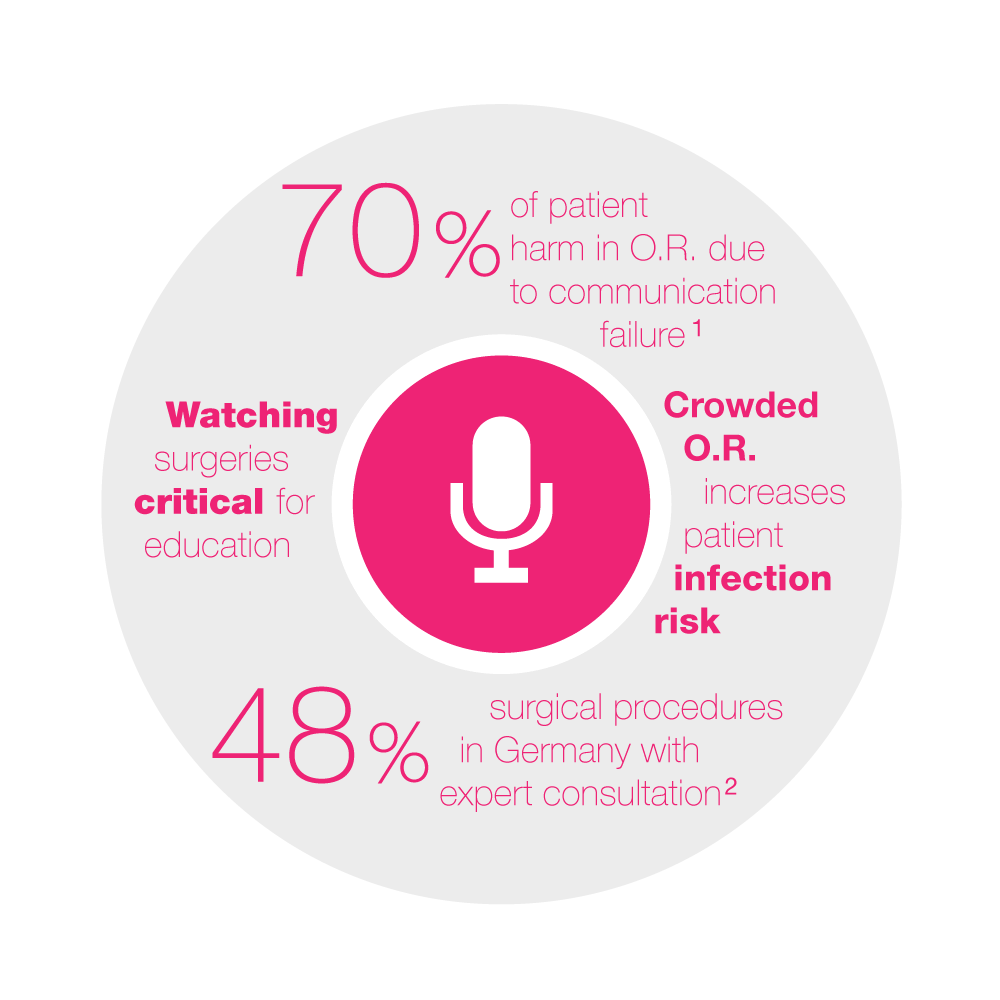Surgical Communication
Surgical Communication
Fostering effective exchange
Brainlab Digital O.R. technology strives to consolidate communication to ensure that the entire team has simultaneous access to the same information in the O.R., but also to make essential information available beyond the O.R.
At the touch of a finger on the Buzz user interface, information and video can be streamed and shared to other locations outside the O.R., expanding teaching and expert collaboration opportunities.
You’ve seen how Brainlab Digital O.R. facilitates communication. Now learn more about integration, documentation and surgical planning in the operating room.
